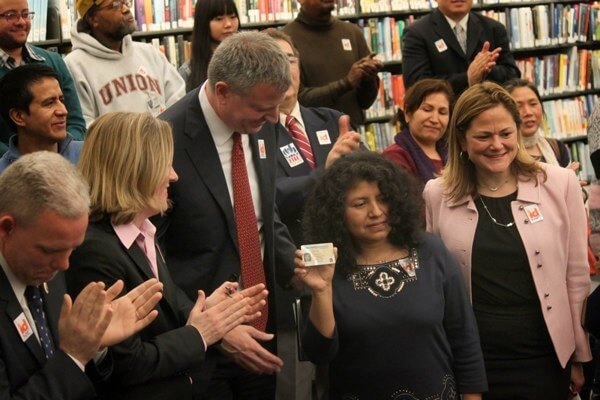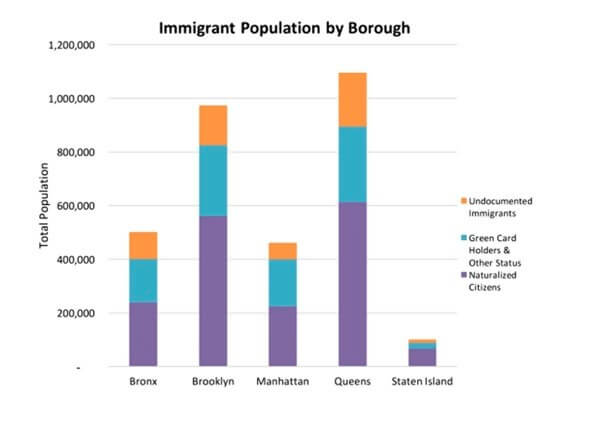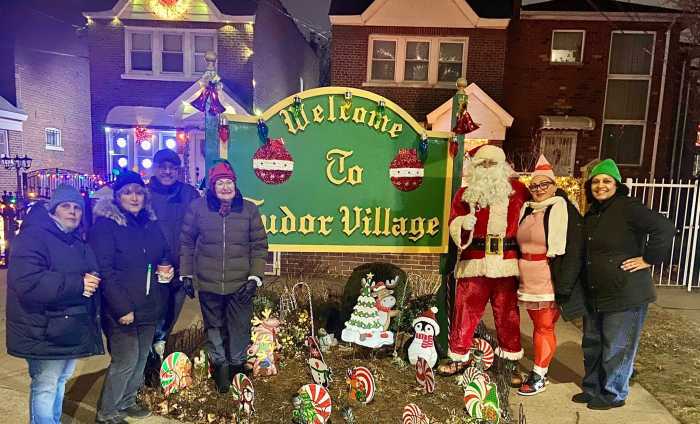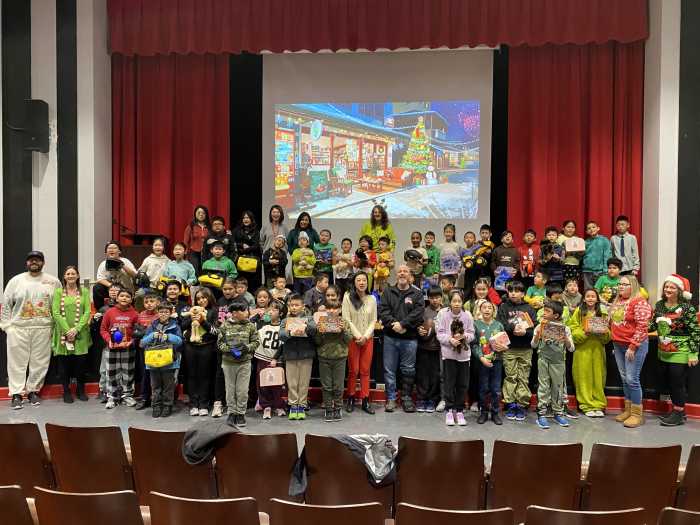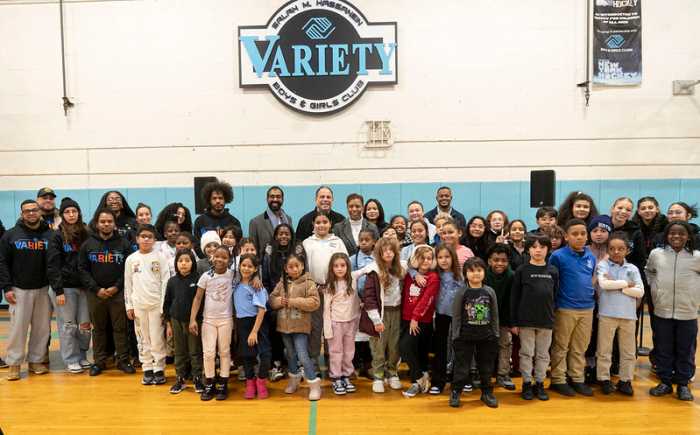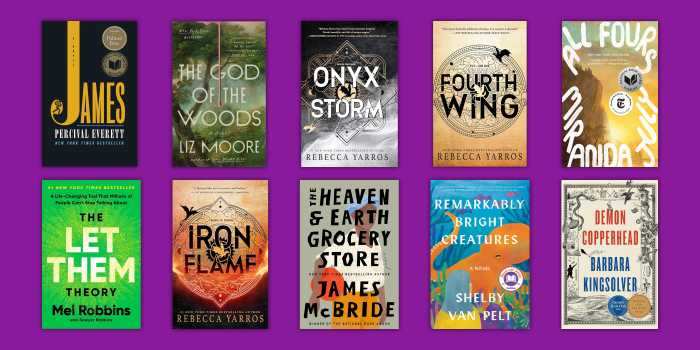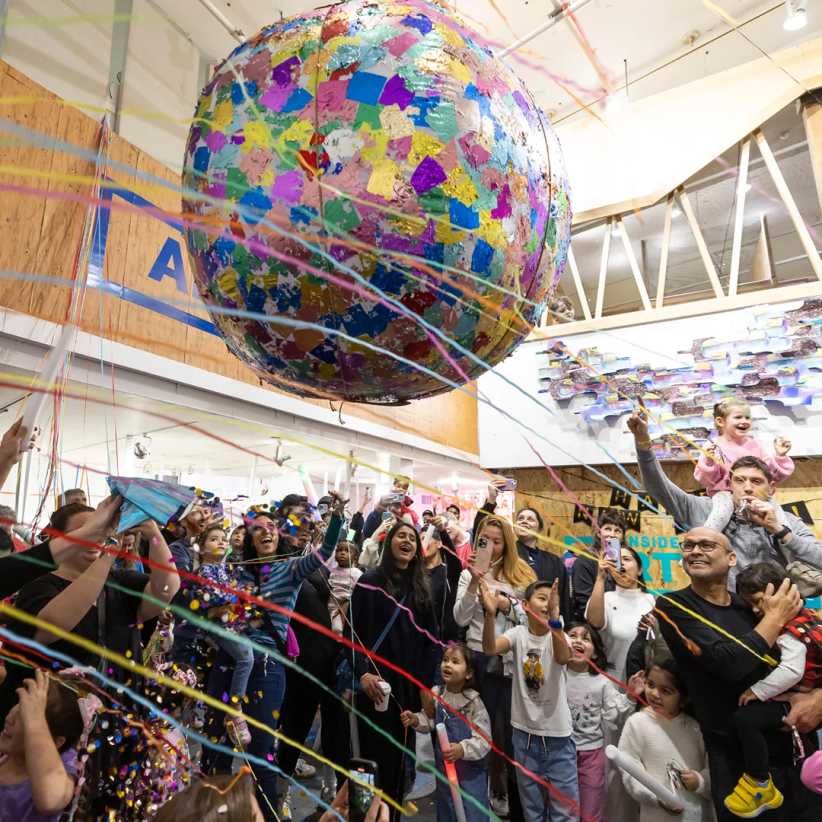By Naeisha Rose
The Mayor’s Office of Immigrant Affairs presented its first report last week, and despite the upheaval within the city’s immigrant population due to shifting policies from the White House, Queens remains the biggest bastion for immigrants of varying statuses.
In a city that is home to over 3.1 million immigrants, nearly 1.1 million reside in Queens, according to figures in the 2018 MOIA report.
Figures from the report depict Queens as the home to the most naturalized immigrant population, the most undocumented immigrants and the most Green Card holders and individuals of other status.
Brooklyn follows closely behind in terms of immigration population, with nearly 1 million foreign-born residents. The Bronx has a little over 500,000, Manhattan has fewer than 500,000 and Staten Island has the least foreign-born residents with a little over 100,000 in its borough.
Throughout the city, approximately 62 percent of New Yorkers live in a household with at least one immigrant.
The report estimates that there are at least 1 million New Yorkers who live in mixed-status households, where a minimum of one individual is undocumented.
Some 54 percent of the immigrant populations in the city are naturalized citizens. Green Card holders, or those eligible for one, make up 660,000 residents in the city. An estimated 560,000 residents comprise the undocumented population.
The most foreign-born residents in the city are from the Dominican Republic, followed by China, Mexico, Jamaica, Guyana, Ecuador, Haiti, Trinidad & Tobago, Bangladesh and India.
More than 150 languages are spoken in the city.
Spanish is the most spoken language of foreign-born residents followed by Chinese (Cantonese and Mandarin), Russian, Haitian Creole, Bengali, Italian, Arabic, Korean, Polish and French.
MOIA’s has 433 interpreters to allow for language access for the city’s diverse population at events throughout the city.
Neighborhood activist groups in Queens like Mujeres en Movimiento and Kollectiv Migrantas help to distribute picture-based materials about MOIA services to the immigration population in the borough.
“This report is great news for our immigrant friends, families, and neighbors,” said Councilman Daniel Dromm (D-Jackson Heights), chairman of the Finance Committee. “The data it contains can help NYC agencies improve language access for those learning English, bolster cultural competency training for city staff, and much more. The possibilities are endless.”
Immigrants in the five boroughs help drive the city’s economy and are responsible for $195 billion, or 22 percent, of its GDP. They also own 52 percent of businesses across the city and make up 45 percent of the workforce.
The city is continuing its work to integrate immigrants economically, civically and socially by providing IDNYC cards, guidance to city agencies for refugees, residents with temporary protected status and Deferred Action for Childhood Arrivals and expanding protections for vulnerable immigrant groups through the legislative process.
“Immigrant communities are an integral part of our city and we have worked diligently to protect and strengthen this legacy,” said Mayor Bill de Blasio. “While others try to play to ugly impulses that cast a shadow over our country’s history, we know that over 3 million immigrant New Yorkers bring strength and vibrancy that help shape our city’s future.
Reach reporter Naeisha Rose by e-mail at nrose

